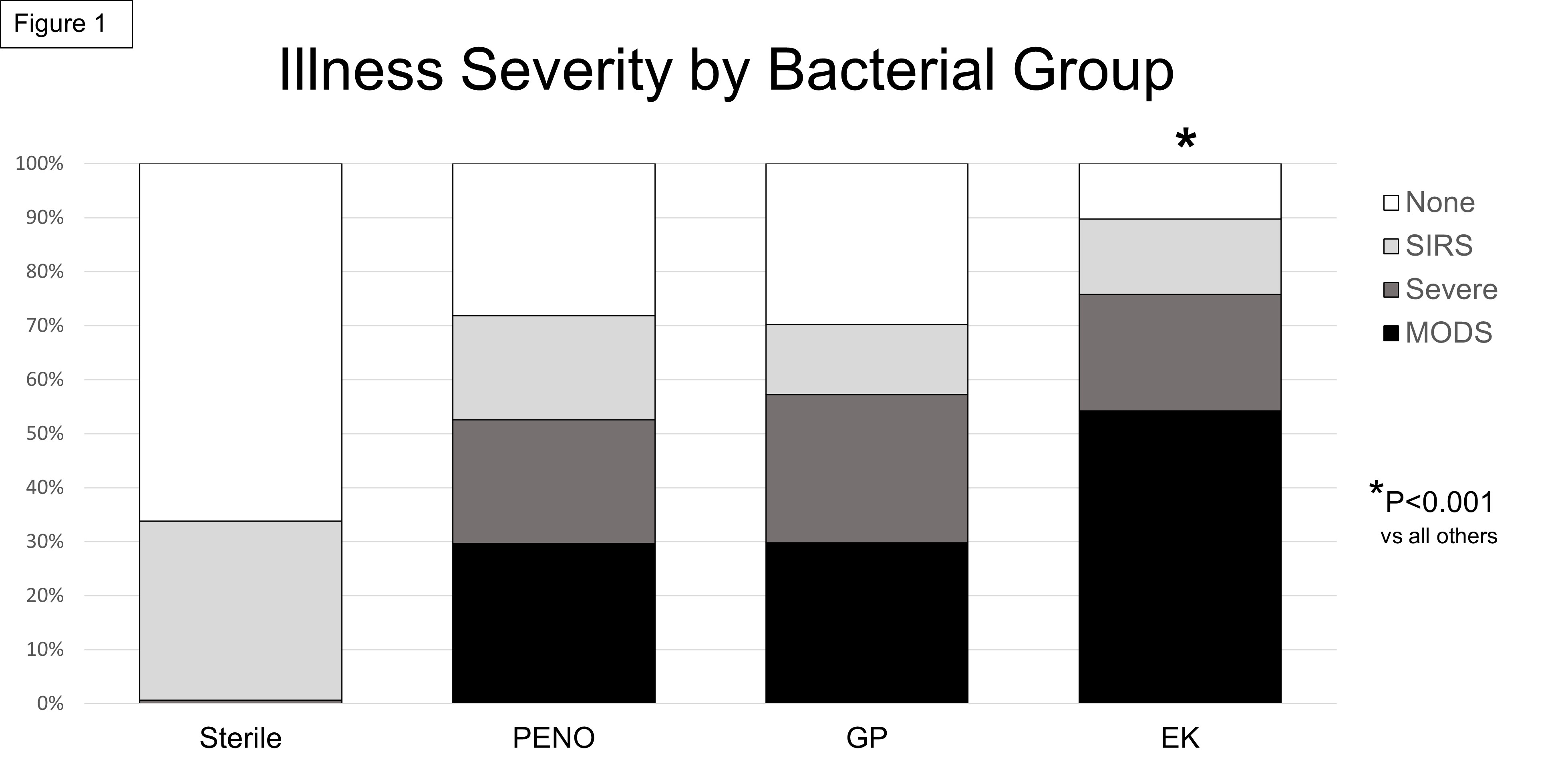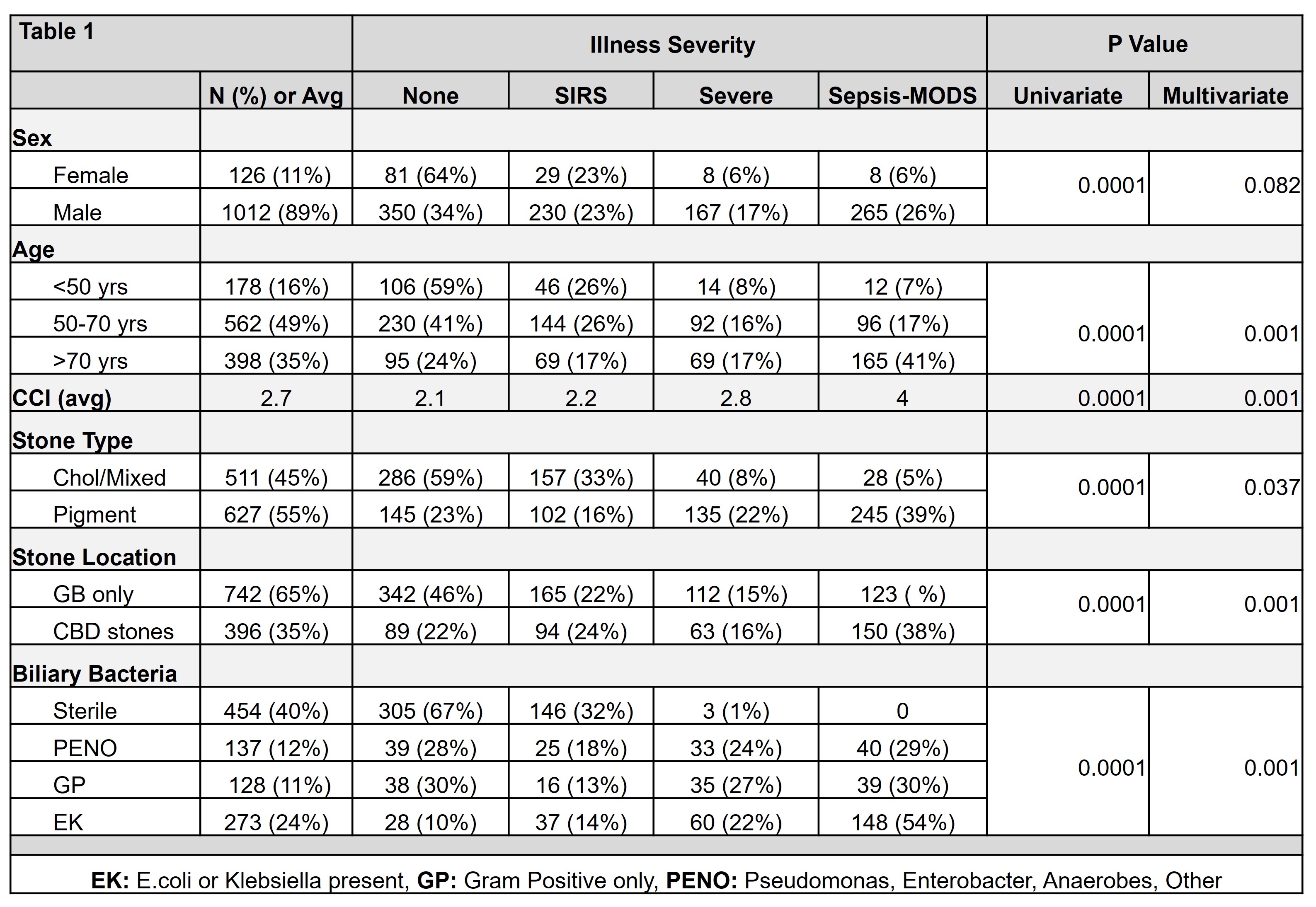Back to 2024 Abstracts
BACTERIAL PATHOGENS INFLUENCE THE SEVERITY OF BILIARY INFECTIONS: E. COLI AND KLEBSIELLA SPECIES ARE ASSOCIATED WITH THE MOST SEVERE INFECTIONS, GRAM POSITIVE BACTERIAL SPECIES ARE PATHOGENS. A MULTIVARIABLE ANALYSIS.
Lucia Calthorpe
*, Lygia Stewart
Department of Surgery, University of California San Francisco, San Francisco, CA
Background: Many factors influence the severity of biliary infections, including pigment stones, factors facilitating pigment stone formation, advanced age, cytokine response, and others. Little specific data exists on how illness severity is affected by different microorganisms. Some studies even suggest that gram positive species are not pathogens. We studied the influence of bacterial species on severity of biliary infections with a large database, utilizing multivariable analysis.
Methods: We studied 1138 VA patients with gallstone disease [1012 (89%) men, avg age 64 yrs]. Gallstones, bile, and blood (as applicable) were cultured. Clinical data was collected. Charlson Comorbidity Index (CCI) was calculated. Illness Severity was defined as none (no infectious manifestations), SIRS (fever, leukocytosis, tachycardia), Severe (abscess, cholangitis, empyema, perforation), or Sepsis-MODS (bacteremia, hypotension, organ failure). Bacteria were grouped as EK-E.coli or Klebsiella present, GP-Gram Positive only, PENO-all other organisms. Univariate analysis and multivariable logistic regression were used to examine associations between bacteria and illness severity. Table 1 shows factors included in the multivariable analysis.
Results: Bacteria were present in 40% of cases (1282 organisms, avg of 2.3 per patient). 27% had positive blood cultures (among cases cultured). 72% of blood cultures grew E. coli or Klebsiella (EK), 29% grew GP, while 13% grew PENO species. 13% of cases had abscess or perforation. Bacteria associated with abscess-perforation were: EK (58%), GP (43%), or PENO (28%). Factors influencing illness severity (Table 1), and associations between bacterial group and illness severity are shown (Figure 1). As shown, a high prevalence of sepsis-MODS was seen in cases harboring EK vs other organisms (54% EK group vs 30% GP vs 29% PENO, p<0.001), and this association remained significant on multivariable analysis. Interestingly, while GP and PENO groups were less often associated with sepsis in younger patients (<70 yrs), they were significant pathogens (causing sepsis) in elderly patients.
Conclusions: This analysis, of a large number of biliary organisms (1282 species), demonstrated that E.coli and Klebsiella were associated with more severe biliary infections and bacteremia. Gram positive species were prevalent in abscess-perforation cases and demonstrated disease severity equal to other bacterial organisms (thus, are pathogens). While GP and PENO species were less often associated with severe biliary infections in young patients, they caused significant illness in elderly patients. Our large, detailed database allowed robust assessment of bacterial virulence and patient factor interactions. This information can facilitate optimal care in patients with gallstone disease.


Back to 2024 Abstracts

